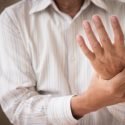Corneal Abrasion Symptoms, Causes, Risks and Remedies
A corneal abrasion occurs when the surface of your eye is scratched or scraped by something. The scratch can be caused by an object, such as a fingernail, rubbing against the eyelid while sleeping. It may also happen if you rub your eyes hard enough to injure yourself with sharp fingernails or from scrubbing too much during cleansing. There are natural home remedies for cornea abrasions that will help bring relief and speed healing.,
You’re more likely to get a corneal abrasion if you spend a lot of time outside, work with wood or metal, or use contact lenses. Pollen, sand, wood, and metal shavings that get into the eye may scrape the cornea, causing excruciating discomfort, inflammation, and perhaps a corneal ulcer if left untreated.
Fortunately, almost all corneal abrasions may be avoided! Wear suitable safety eyewear while dealing with wood or metal. Put on your sunglasses. or goggles while hiking, sunbathing on the beach, skiing, or riding your bicycle to keep debris out of your eyes.
When we have a foreign item in our eye, our natural reaction is to massage it to ease the inflammation and itching. This is the worst thing you could do. The rubbing may cause the foreign item to scrape against the cornea, causing additional injury. The proper technique to remove material from your eye, as tempting as it may seem, is to wash it out with saline or water gently.
If you are experiencing severe discomfort or have clouded vision, get medical help right once, especially if you suspect the particle is made of wood, glass, or metal. An eye doctor will inspect your eye thoroughly and may prescribe pain relievers or antibiotic eye drops to protect you against infection.
Corneal abrasions, like pink eye, are quite prevalent in young children. The most common causes of a scratched cornea in youngsters are toys, dirt, and fingernails. Keep your fingernails as short as possible to avoid eye damage. The problem, of course, is that, just like adults, children have a strong desire to massage their eyes when they hurt or itch. Therefore, it might be quite challenging to prevent toddlers from touching their eyes.
Eye patches were formerly often used to aid in the healing process and prevent rubbing. Eye patches, on the other hand, have been shown in several trials to slow healing, raise the risk of infection, and increase discomfort in the first 24 hours following an accident. Before using an eye patch, consult your doctor. A patch should not be worn for longer than 24 hours under any circumstances.
While most corneal abrasions heal without issue — frequently in just a few days — some individuals may develop scarring that may compromise their vision in the long run. This is why both children and adults must get medical care as soon as possible to help guarantee a healthy result.
Symptoms
- When opening or shutting your eyes, you may experience pain.
- Having the impression that there is something in the eye
- Tears that don’t stop or eyes that aren’t dry
- Inflammation of the eye
- Eyelids swollen
- Light sensitivity that appears out of nowhere
- Vision becomes blurry suddenly.
- Vision loss that occurs suddenly
- Twitching of the eyes
- Nausea
- Having a dull or pulsing headache
Causes and Risk Factors
Foreign substance entering the eye causes the majority of scratched cornea damage. Risk factors that have been identified include:
- Working in a dusty, ashy, metal shavings, dirt, or glassy environment
- Chemical poisoning
- Working as a miner, a metal worker, a carpenter, or a landscaper are all viable options.
- A violent rubbing of the eyes.
- Allergies to certain seasons.
- Surgery is performed under general anesthesia.
- Being drugged or on a ventilator are both examples of being highly sedated.
- Having lengthy fingernails as a young kid.
- Wearing soft, extended-wear lenses are linked to a 10 to 15-fold increased risk of ulcerative keratitis, a dangerous corneal infection.
Risks
The majority of corneal abrasions heal without issue in a few days. There are, however, certain issues that may develop. (eight, nine, ten)
- Corneal erosions may develop at the initial abrasion site if the damaged cells do not grow back securely connected to the cornea. This may result in even more severe discomfort, and full healing of the eye will need extra medical intervention.
- Symptoms might last for weeks or months. See your ophthalmologist right away if they worsen or your eyesight is impaired.
- Following an injury, dry eyes are frequent. To treat dryness, use natural eye drops.
- Increasing inflammation.
- The cornea is scarred.
- Ulcers on the cornea.
- Prolonged vision loss.
- Blindness.
Do’s and Dont’s
DO:
- Make an appointment with an ophthalmologist.
- Wear sunglasses
- As directed, use antibiotic eye drops.
- To alleviate swelling, pain, and discomfort, use a cold compress.
- Maintain a clean face and eyelids.
- Return to the doctor when an eye discharge occurs.
- Reduce pressure on the eyes by resting them.
DON’T:
- Rubbing the eyeball
- Other than blinking or flushing the eye with water or saline, try to eliminate debris from the eye.
- Remove anything from the eye using a cotton swab or tweezers.
- Unless your medical staff tells you otherwise, apply a patch to your eye.
- Wear contact lenses until an ophthalmologist says it’s okay.
- Makeup on your eyes.
Treatment
An ophthalmologist will numb the eye with medications and use a fluorescent dye and blue light to identify damage to the cornea during an eye examination. Any material that remains will be visible, and the doctor will be able to securely remove it.
Depending on the severity of the damage, most physicians would want to revisit their patients in 24 to 48 hours. This is done to ensure that the cornea heals correctly and that no infection develops.
Following a diagnosis, the doctor may suggest one or more of the traditional therapies listed below:
- To prevent infection, use antibiotic eye drops or ointment.
- Inflammation relief with steroid eye drops
- On the other hand, topical pain medications may cause recovery to be delayed and are not suggested for contact lens users.
- If the debris was made of metal, Tetanus would be administered.
6 All-Natural Treatments
1. Put on your sunglasses.
It’s fairly unusual for the eyes to become sensitive to light after such an injury. However, wear sunglasses if you must go out in the sun to avoid more aggravation. Indoors, fluorescent and overhead lights may be annoying; turn them off and replace them with softer-toned desk lamps.
2. Green tea or chamomile tea compress.
Place a chamomile or green tea bag on the eye after soaking it in hot water for a minute or two. For 10 to 15 minutes, lean back and relax. These teas offer potent antibacterial, antifungal, antiviral, and anti-inflammatory qualities that may aid in pain relief and healing.
3. Coconut oil.
Coconut oil, well-known for its health advantages when ingested, is also safe to use in the eyes. Studies indicate that it is quite comparable to natural tears and offers an additional layer of eye protection, including anti-inflammatory characteristics. Apply a little dab of coconut oil on your pinky and apply near the tear ducts with clean hands (with clean hands!). Then, allow the coconut oil to glide over your eye by blinking.
4. Turn off all electronic devices.
It’s critical to allow your eyes plenty of time to recover following an eye injury in the first few days. Turn off the technology; gazing at a screen has been proved to induce eye strain.
5. Silver colloidal.
1 to 2 drops of colloidal silver, which has been demonstrated to pick up contaminated cells and eradicate them from the eye, has been shown to combat a broad spectrum of germs. Only buy from trusted suppliers and utilize within the prescribed time frames.
6. Cedarwood oil
Inhale cedarwood essential oil straight from the container or through a diffuser to relieve discomfort. According to a research published in the Journal of Ethnopharmacology, this essential oil may have analgesic and anti-inflammatory sedative qualities, which might aid with pain relief.
Key Points
- One of the most prevalent eye ailments is a corneal abrasion.
- It’s a painful, often agonizing injury that may lead to infection and corneal ulcers if left untreated.
- Wearing protective eyewear may prevent the great majority of cases.
- The cornea may be scratched by sawdust, metal shards, broken glass, dust, pollen, and sand.
- Fingernails, dirt, and toys are all common causes of eye injury in young children.
- Patching the eye, which was historically usual, is no longer suggested since it might prolong healing, intensify discomfort, and raise infection risk.
- Instead of rubbing your eyes, flush them with water or saline.
- Scratched corneas usually recover in 24 to 48 hours.
- A dab of coconut oil on the eyelids may help ease irritation, reduce dryness, and fight infection while also offering additional eye protection.
- A compress made from green tea or chamomile tea may help prevent infection while also alleviating moisture and discomfort.
- If your eyes are sensitive to light, use sunglasses.
- Allow 24 to 48 hours for the eyes to recuperate before using technology or straining them.
- Colloidal silver is a bacteria-fighting agent used to cure pink eye and other illnesses.
- Diffuse essential oils to help you relax and reduce discomfort.
Frequently Asked Questions
How do you heal a scratched eye naturally?
A: There are many ways to heal a scratched eye. You can use olive oil, honey, or egg yolk mixed with milk and then apply it to the wound three times daily for seven days. Or you could scrub your eyelashes against cotton balls until all traces of the blood were removed.
Can I treat corneal abrasion at home?
A: You should contact your doctor to ensure that you are using the right treatments for your condition. It is possible but not recommended at home without medical supervision.
How do you relieve a scratched cornea?
A: Scratches on the cornea can be treated with a topical anesthetic and antibiotics. There are other treatments, such as laser surgery or cryotherapy, which you may also want to consider if your injury is severe.
FDA Compliance
The information on this website has not been evaluated by the Food & Drug Administration or any other medical body. We do not aim to diagnose, treat, cure or prevent any illness or disease. Information is shared for educational purposes only. You must consult your doctor before acting on any content on this website, especially if you are pregnant, nursing, taking medication, or have a medical condition.
HOW WOULD YOU RATE THIS ARTICLE?





